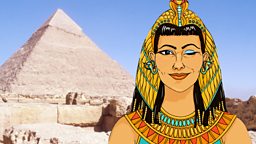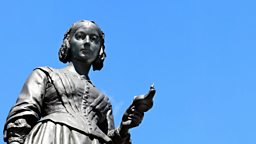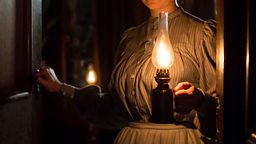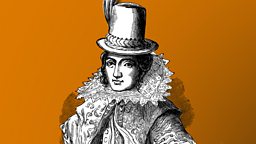12 amazing historical facts that Homeschool History has taught us
Greg Jenner makes learning at home fun by firing fab, fact-filled lessons at your ears in the Homeschool History podcast.
As the second series hits Radio 4 and 大象传媒 Sounds, why not warm up your brain with this selection of extraordinary knowledge nuggets that Greg has taught us already?
1. Cleopatra married both her brothers
Cleopatra, the famed Queen of Egypt, is remembered for various things including being unrolled from carpets (though it was more of a duvet), bathing in milk (unconfirmed) and using a snake to kill herself (it was probably just poison and no asp was involved). But one thing you may not know about her is that she married not one but two of her brothers. Who were both called Ptolemy! In fact, everyone back then seemed to be called Ptolemy (including her dad) – but that’s another story.
In ancient Egyptian times, women were not allowed to rule without a male consort. So Cleo picked her kid brother on two separate occasions. One drowned due to golden armour and the other was probably poisoned on her instructions. Talk about brotherly love.
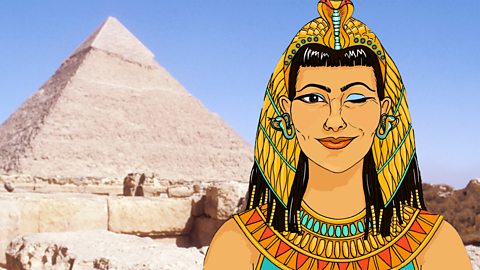
Who was the real Cleopatra?
A clip from Homeschool History.
2. Posh ladies would buy gladiator scrapings
So much of what we think we know about Roman gladiators comes from movies such as…erm… Gladiator. But the reality of their lives was pretty different. They didn’t usually fight to the death (it cost a fortune to train and house them), they bulked up on barley (they were known as the “Barley Boys”) and some of them used fishing nets to fight with. But they were incredibly popular and did have fanatical followers. Rich Roman ladies would pay to have the sweat and muck scraped from their favourite fighter’s body after a session in the arena, which they would then use as a fancy moisturizer!
Listen: Homeschool History lesson on Roman Gladiators
3. The Bayeux Tapestry is fake news
The entire story of the 1066 Battle of Hastings between Harold and William (spoiler alert) the Conquerer is illustrated in the Bayeux Tapestry which not only contains a number of falsehoods and exaggerations but isn’t even a tapestry. It’s an embroidery.
One of the most famous panels shows the defeated King Harold with an arrow in his eye. But written reports from the time never mention this injury and say the king was hacked to death by a gaggle of Norman knights. So never get your news from tapestries!
4. Florence Nightingale had a pet owl
Iconic nurse Florence Nightingale made her name tending to soldiers during the Crimean War but she practised her nursing capabilities as a youngster by tending to a plethora of injured animals. One of the more unusual ones was a little owl called Athena that she trained to peck her sister when she was being annoying.

And it wasn’t just woodland birds that took her fancy – she adopted at least 60 cats during her lifetime and advocated the use of small animals, even tortoises, to help sick people in hospital recover more quickly.
5. Pocahontas is buried in Kent
Unlike the rather uplifting Disney film, the actual life of Pocahontas was pretty grim. She never married the dashing John Smith (who was real but a bit of a fibber), but was coerced into marrying another Englishman, John Rolfe, who took her to Britain and basically used her as a living advert for his tobacco company back in America.
In 1617, once the trip was over, she was allowed to head home. But she suddenly became very ill on board ship and was taken ashore at Gravesend in Kent. She soon died of a mystery ailment and was buried at a churchyard in the town.
6. Charles Dickens had a fear of trains
In 1865, the novelist Charles Dickens was involved in his own dramatic turn of events. He was travelling on a train that suddenly plunged off a bridge. He escaped unharmed and was even able to help the other passengers before rescuers arrived. And he went back into his mangled carriage to grab his unfinished manuscript for Our Mutual Friend.
Even though he wasn’t permanently injured, the crash would have a major impact as – terrified at the prospect – he avoided travelling by train for the rest of his life,. He also failed to turn up at the inquest investigating the crash, as he’d been travelling with his mistress at the time and was keen to keep that quiet.
7. Mary was queening the Scots as a newborn baby
It’s safe to say that Mary Queen of Scots had a somewhat troubled life with numerous deaths, murders, kidnappings and plots against her. The trouble started early for her as her father, the King of Scotland James V, died when she was just six days old and she suddenly found herself as the brand new Queen.
Unsurprisingly, it was decided that a baby might not be the best head of state, so her mother ruled on her behalf. But this set the pattern for the rest of her life as she was rarely allowed to make her own decisions, even when she was out of her nappies.
8. Charles II was King even when he wasn’t
For a brief period in the 1600s, England didn’t have a king. Charles I had been removed from the throne and had his head cut off, and he was replaced by Oliver Cromwell who acted as the “Lord Protector”. Charles’s son, Charles II, ran off to France and seethed a bit. But, eventually Oliver Cromwell died, his son took over but was rubbish, and so they decided to have a go with monarchs again.
Charles II retook the throne in 1660. And Parliament decided that his reign actually started on the day his father was executed 11 years earlier, even though it didn’t and he wasn’t even in the country, and sort of pretended that the Cromwell years never happened.
Listen: Homeschool History lesson on The Restoration
9. Buzz Aldrin wet himself on the Moon
The Apollo 11 mission in July 1969 featured many firsts: the first time men had walked on the moon (obvs) and the first time anyone had got a good look at the lunar surface. But one first that NASA doesn’t trumpet too loudly is the fact that Buzz Aldrin was the first man to have a wee on the moon. And not only did he do that but the urine collection device in his spacesuit broke. So he was also the first man to be a bit soggy on the moon!

What was The Space Race?
Greg Jenner explains the war for the stars.
10. Neolithic Britons were great at crouching
Although the Stone Age lasted for a very long time – around 2.5 million years – the last bit of the Stone Age, known as the Neolithic era, was much shorter, lasting about 1500 years.
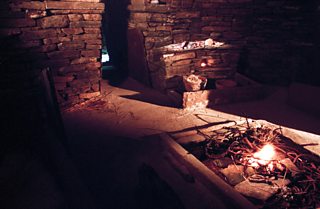
One great source of Neolithic knowledge is the incredibly well-preserved settlement of Skara Brae in the Orkney Islands. Several small houses were discovered there in pristine condition (archaeologically speaking), but what was odd about these homes was that they had a fire in the centre of the room, but no chimney. So how did these ancient people cope with the smoke? Archaeologists believe they would just crouch and try to breathe in the clear air closer to the floor. Must have played havoc with their knees!
11. Mansa Musa is still the richest man who has ever lived
Despite the best efforts of billionaires such as Bill Gates and Jeff Bezos, it’s a 14th Century Emperor of Mali in West Africa who still holds the record for having the most dosh. Historians have worked out that Mansa Musa was worth an incredible £325 billion, roughly, in modern money. Old Jeff can only squeak by with a quarter of that. Mansa Musa mainly made his money from gold, spices and salt, rather than selling copies of Harry Potter on the internet.
12. The First Emperor of China was nearly killed by a lute
Qin Shi Huang founded the Qin dynasty and united China, becoming its first Emperor in 221 BCE. He did this through quite a lot of violence plus a certain amount of sneakiness, and so, unsurprisingly, he wasn’t very popular and there were numerous assassination attempts made on his life. The oddest one was by a musician who tried to bop him on the head with a lead-filled lute. But he missed.
The Emperor eventually died of natural causes and was buried with the famous Terracotta Army to protect him in the afterlife.
Listen: Homeschool History lesson on The First Emperor of China


